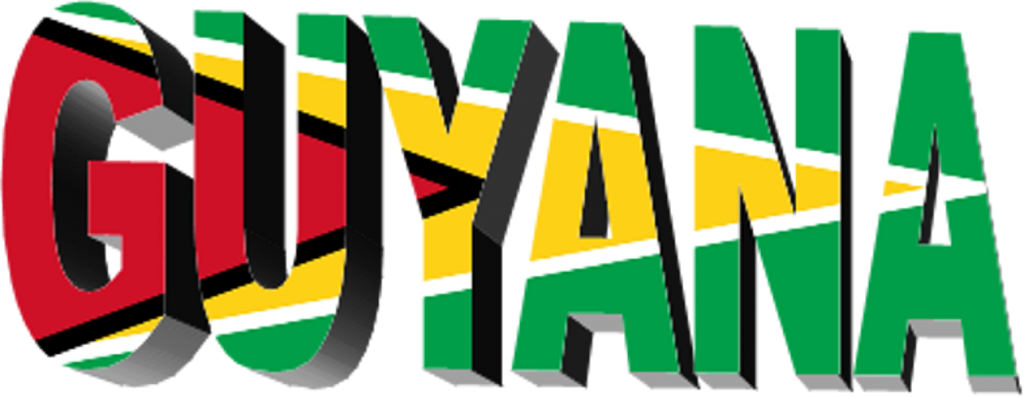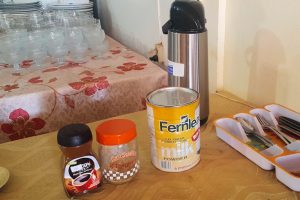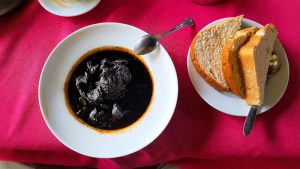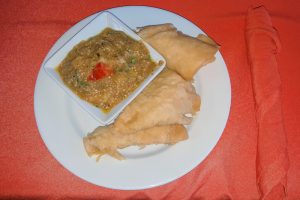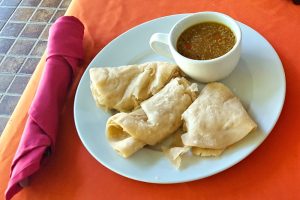This site contains Affiliate Links, which means that I may earn commissions through links you make purchases through. For more information Click Here!
LAND OF MANY WATERS
So, you are thinking of going to Guyana? Great! Let’s jump right into what you need to know to make your trip to Guyana awesome. I am going to start off with just a few quick basics. We will dive into more depth as we go on.
The Musts
-
No Visa Required
- If you are traveling on a U.S. passport, you do not need to apply for a visa beforehand. You will be given a visa form on the plane to fill out before you land in Guyana. So take a PEN!
-
You will need a Yellow Fever shot.
- At the time of this writing, Guyana requires you to have a Yellow Fever shot travel to Guyana. To find a clinic near you can use the CDC locator; Search for Stamaril yellow fever vaccination clinics. (NOTE: I recommend a Typhoid fever shot, as well as Malaria preventative medication as well. More information on this further down.)
-
Take NEW Cash!
- Few places in Guyana accept credit cards, especially anywhere outside of the capital city of Georgetown (even nice hotels), so CASH is a must. Evidently, there is also a lot of counterfeiting of U.S. currency going on in Guyana because, even though most stores, hotels, taxis, etc, will accept U.S. Dollars, they will only take NEW crisp bills. Some places will even check the serial number on the bills and if it is lower then a certain number they will not accept it, and bills that have any defect or are even moderately worn will not be accepted, because the Guyanese banks will not take them.
- It is best to exchange your US dollars for Guyanese dollars as fast as possible. Dealing in US dollars can be confusing and you will lose a lot on Street Exchange. You will get your best exchange rate at a real bank like the Republic Bank. You will need to show your passport and answer some questions to exchange money at a bank. At the time of this writing, the exchange rate was 208 GYD to 1 USD. To check out the latest exchange rates Click Here.
Preparing for your Trip
I have traveled all over the world I have never once been mugged or had my papers stolen, but there is always a first time and luck favors the prepared. There is nothing worse than the feeling of being in a foreign country with no money, no papers and no way to contact help.
It happened to me one time many years ago that I left my backpack on a bus to go to the bathroom at a bus stop in Brazil. While in the bathroom the bus left without me, taking my wallet, my passport and everything else. I will never forget the feeling of complete helplessness and panic that came over me in that instant. There I was in a foreign country with no identification, not a dime to my name and not even an extra change of clothes. You don’t ever want to feel that way. Here are the steps I have taken ever since.
-
Make Copies of your Identification and Important Contacts
- Make at least two hard copy of the main picture page of your Passport and ID card (drivers license). Keep one on your body at all times and one in your main travel bag that you leave at your hotel (in a room safe if available).
- Make digital scans of your Passport and ID and email them to yourself or store them in the cloud on Google Drive, Drop Box, iCloud, etc.
- Make copies of important phone numbers to call in case of emergency and keep copies with your other important papers. Including the number of the American Embassy of the country you are going to is a great idea as well.
-
Protecting Yourself against Thieves, Physical and Digital
- Store all of your real passports, IDs, credit cards and even your cash in RFID blocking Sleeves like these from Alpine Rivers.
- Create two emergency rescue packets one to keep on you and one to keep in your bag or room. A rescue packet is a RFID sleeve with a credit card and a good amount of cash ($500) that will be a lifesaver in the event that you get mugged or pickpocketed. Keep these packets with the copies of your passport and ID.
- Have at least two covert hiding places on your body. Thieves know that most tourists have at least one other area they are hiding money on their body aside from their wallet. Money belts and necklace pouches are two very common places that a mugger may check if you have the misfortune of being a victim of one of these cowards. These are a good idea to carry as a “Give Away” item in the unlikely event that you should face a mugger that demands more than just your wallet. I always keep several small bills in a money belt for this very purpose. If I am ever mugged and they mugger demands that I have hidden cash I am not giving him, I can pull out the hidden money belt and satisfy him with it, thus assuring that my real backup rescue packet is not searched for. I personally love these new TRU-SPEC Covert 24-7 Tactical Pants for hiding my rescue packet, passport and anything else I don’t want people to know I am carrying around.
Staying Connected in Guyana
We live in a connected world. Much of our life is online nowadays. But how do we stay connected when we travel? Well, the answer can be simple or difficult, depending on what kind of service you need. To start with I will address basic communications needs.
When I travel I set up a completely separate Travel Phone to use while I am out of the country. This “Travel Phone” as I call it is just Unlock Global GSM phone. Don’t worry, these more common then you think. I do not recommend taking your shiny new $1,000 Samsung Galaxy or Apple iPhone smartphone to a third world country where it will become an immediate target for thieves that will be drawn to it like moths to a light. Not only do you not want to have your primary phone stolen because it is expensive; it also contains a lot of vital information that could result in significant damages to your security and safety. The most valuable thing is not your phone, but the INFORMATION on your phone. Smartphones contain enough data to destroy your life if it falls into the wrong hands. Why take that kind of risk? Get yourself a good, but way less expensive Travel Phone to use while in Guyana.
On my recent trip to Guyana (2019) I bought a nice unlocked Samsung Galaxy S6 Active G890A off of Amazon.com for $120 to take along. This phone worked great with Guyana’s Digicel Service Provider. I had no problems making calls anywhere there was service in Guyana, even in the remote border town of Lethem. It cost $30 for a new Digicel sim card and a month of service that included 3.5 GB of data service. The S6 Active is a pretty solid phone and provides water resistance and some shock proofing built in. I like to protect it even further by putting it in a Unicorn Beetle PRO case.
Once you have a good unlocked travel phone like the S6 Active, here is how I recommend you set it up. I create completely separate accounts for my travel phone that are only for use while traveling. None of these accounts are connected to my real name or family. I never install any financial apps on my travel phone, or any other apps that could be used to gain access to crucial information about me and my family. This way, if my travel phone gets lost or stolen while I am in a foreign country, I do not have to worry about what is on the phone.
Since you will be taking a lot of pictures on your travel phone I recommend installing the Google Photos and connecting the app to a sperate Gmail account then your primary account and setting the app to back up all your photos over WIFI when you are in your hotel room. This way if you do lose your phone, you will not lose all your photos as well.
There are three very good apps that you should install when traveling.
- WhatsApp Messenger. This app is the primary communication app that is used in Guyana and most of Central and South Amarica. It is a very reliable way to communicate with friends and family back at home (if they have the app installed) and will save your mobile data if you use it over wifi.
- Skype. This app performs basically the same function as Whatsapp, with on major difference. It can make calls over wifi to real mobile or landline phone numbers that do not have Skype installed. Whatsapp cannot do this. It does cost money to call real phones that do not have Skype installed, so you will have to set up a payment system to do this (you can use paypal to fund my Skype account). In an emergency where there is no cellphone service and all you have is wifi, you can make that critical call if you need to. Also, some travel services in Guyana such as Trans Guyana Airways use Skype and you can arrange tickets with them over this app.
- Zello PTT Walkie Talkie. Zello is a great communication app that works with even the smallest amount of data service when nothing else will work. It is one-way communication where you push and hold to talk and let go to listen, but it works well and is my fall back when nothing else will work. Of course, it only works with others that have the app installed, so make sure the people you want to talk you have it on their phone before heading off.
But what if you go out into the jungle on an excursion where there is no wifi or cell phone service and you encounter an emergency or life-threatening situation? Well, if you think that this is even a possibility, you need to be prepared for it. There are many systems out there but the one I use and carry with me is the Spot Satellite GPS Tracker. This little device allows you to send out pre-typed messages to people who may need to know that you are okay when you are out in the wilds. If an emergency situation does arise, it has an SOS button that will transmit your gps location to the GEOS Search and Rescue system which will coordinate with local rescue agencies to get you out alive. The service cost about $100 a year for messaging and $100,000 of rescue insurance is available at the time of service activation for around $50 or less.
Staying Healthy in Guyana
-
Malaria Prevention
- You are going to get bit by mosquitoes! Malaria is not under control in Guyana and if you don’t want to experience the horrors of the worst disease known to man, that kills an average of 10 million people a year, you need to take a Malaria preventative medicine. There are several options for Guyana and you should talk with a tropical travel medicine specialist about which one is right for you. I personally use Mefloquine because is a weekly dose, but it can have some side effects that would prevent some people from taking it. Atovaquone-proguanil is another option, but it must be taken on a daily basis. Doxycycline, is yet another option and like Atovaquone-proguanil it must be taken daily. It is extremely hard on the stomach, makes you very sensitive to sunlight, and is less effective then Mefloquine and Proguanil. I personally cannot take Doxycycline because it causes severe uncontrollably acid reflux in me and I do not travel to the tropics to Stay Inside out of the sunlight.
-
Typhoid Fever Prevention
- Guyana is a poor third world country with unreliable water sanitation and raw sewage waste disposal systems. Like Malaria, you do not want to even take a chance of getting this disease, so go ahead and get a typhoid fever vaccination. You have two options when it comes to the vaccine. You can take it orally or by injection. The injection is the surest way to make sure you are covered, but the shot hurts like you got kicked in the arm by a mule and it only last three years. The oral is a lot easier to take and it last five years, but it must be taken with extreme care and precision to be effective. The pills contain extremely delicate live organisms that must be kept in a certain temperature range or they will die and the vaccine will be useless. You must take it over several days at the same exact time without missing to achieve maximum coverage. Personally, I would rather grin and bare the shot to make sure, but that is just me.
-
Prevention of other Insect Communicable Diseases
- Unfortunately, there are still more diseases to be concerned with, but unlike Yellow Fever, Malaria, and Typhoid Fever, there are no vaccines or meds to prevent them. There are far too many to go into detail about, but Dengue and West Nile Virus are of the most concern. These are communicated via mosquito bites, so you must take measures to not get bit. There are as many opinions on keeping mosquitoes away as there are mosquitoes, but you really don’t want to place your bets on opinions. Go with what works. Mosquito Nets WORK. They are a pain in the rear, and not very comfortable, but they work when you need them to, which is at night when you are asleep, which is the time you are most likely to get bit. Mosquito nets come in many shapes and sizes, but the two most common are the Canopy Style Bed Mosquito Netting and the Hammock Style Mosquito Net.
- Since you cannot live in a mosquito net on your vacation to Guyana, you need to also take along some good repellent. There is nothing that beats DEET. Sorry, but that is just the way it is. DEET is king when it comes to keeping those disease-carrying insect with hypodermic needles for noses away. Don’t cut corners here. Go with 100% deet like Repel 100 Insect Repellent. What about those personal mosquito repellers like the Thermacell MR150 Portable Mosquito Repeller. Unfortunately, these use an aerosol canister and cannot be taken on a plane due to the risk of them exploding.
-
What about Diarrhea?
- Nothing can ruin a great vacation faster than a good case of the Runs! Because, in spite of your best efforts, you are almost certainly going to be exposed to something that is going to cause your intestines to flip out, you need to prepare your stomach to do battle. In this war PROBIOTICS is the armament your digestive system needs to fight what it is about to encounter. You may not realize it but there are about twenty-one TRILLION live bacteria in a healthy digestive system. Yep! You read that right. These bacteria are crucial not only to your digestive health, but to your overall health in general. In fact, because of modern medical research that continues to discover just how much these trillions of bacteria affect your health, some doctors are considering classifying gut bacteria as the largest organ in the human body. Unfortunately, because of the sanitized bacteria-free world that first world people live in, most Americans are actually deficient in this area. This makes them a lot more susceptible when they step outside of there sanitized safety net of civilization that protects them from the common bacteria that all people in third world countries are basically immune to. So to prepare your body, you need to start building up your good gut bacteria in advance before you head off to Guyana by taking a good probiotic at least a month in advance of your trip.
- There a lot of great probiotics out there on the market. Personally, I use Garden of Life RAW Probiotics Ultimate Care as a pre-trip regimen to get my system ready. At around $37 for a month supply, they are a little high priced, but they are the strongest I have found and have solved a lot of the intestinal problems that I struggled with for years due to overuse of antibiotics. For continuous daily gut health on the trip and when you get home, I prefer NewRhythm Probiotics 50 Billion CFU. These average around $8 for a month supply (1 daily) and I have really good success with these.
- Don’t Drink the Water! Yes, you have heard this before but you may get fooled by what you have not considered. Just image this situation. You just get in from a day of melting in the tropical heat and humidity. The first thing on your mind is a nice cold drink. The waiter brings you a room temperature Coca-Cola and an inviting tall glass of ice. You pour the refreshing soda pop over the wonderful ice and suck it down until you see the bottom of the glass. Unbeknownst to you, you just drank down a glass of tap water. Yep. As much you love it, ICE is off limits in Guyana. Cold does not kill harmful bacteria. If the ice in your glass was not made with purified water, it may contain the very bacteria you are trying to avoid. Another place you might get contaminated water is in the shower or when you go swimming. Be sure to keep your mouth shut while showering or swimming in natural waterways like rivers and lakes.
Getting around Georgetown
When you land at the International Airport outside of Georgetown, you going to have to take a taxi. There are no ride-sharing services like Uber or Lyft operating in Guyana at the time of this writing. The airport is quite a ways outside of Georgetown, so be prepared to fork out around $40 to get to your hotel. Getting around Georgetown via taxi is not that bad with most rides costing around $5 to $7 (1,000 to 1,400 Guyana Dollars). If you find a driver you like, get his number and call him in advanced. My favorite Taxi driver is a really nice guy named Field.
Taxis are a little difficult to identify if you don’t know what you look for. A few are Taxi Yellow, but most are just any color and make of car with no other markings like a TAXI sign on top. The way you can tell which car is a Taxi, is by looking at the License Plate. All Taxi plates start with HB or HC
If you hear a car honk twice near you that has an HC as the first two letters of the license plate, they are asking you if you want a ride. Unfortunately, all cars on the road honk at each almost all the time as a way of saying “Hey buddy, I am right here” or “I am going to pass you”, so it can be hard to tell. This is why it is important to get the numbers of taxi drivers you like so you can call them to come to get you.
A word of warning here. I do not recommend any American try to drive in Guyana. It just is not worth it. Driving in Guyana is a constant game of Chicken. The only rule is to know when to give in or to go. Until you understand the system, it is best to let those who know it drive you around. Oh yeah, I almost forgot. They drive on the left side of the road too. Or at least they are supposed to, but in reality, they just drive on the part of the road that is in the best shape. Seeing cars going the wrong way on a one-way street is every five minutes is a little unnerving at first.
Stop signs and red lights might as well not even be there. There is actually a pretty good reason that a lot of drivers will not stop at red lights, especially at night. Red lights are a common place to get carjacked according to the taxi drivers I rode with.
There a lot of hotels in Georgetown, but the one I like the best is the Grand Coastal Hotel. Rooms start at around $70 and they have a really nice restaurant right in house where you can get gourmet-style meals for a reasonable price. The staff is very professional and helpful as well.
Traveling to the Interior
Guyana is a strange country in that going to the interior is almost like going to a different country. In some cases, you may even have to go through immigration to get out of the airport on a domestic flight. In the past, it was even necessary to apply for a travel permit just to level the city limits of Georgetown. Fortunately, today travel to the interior is not quite that difficult, but it does seem a little strange to Americans who are used to traveling between states with no thought at all to have to go through immigration to just go to another part of the same country.
If you are going to travel to the interior, you have the choice to fly or go by land. I highly recommend you fly if at all possible. The roads in Guyana are pretty bad at best and possible at worst. If you don’t have back problems when you start, you might when and if you get to your final destination. If you do choose to fly, check out Trans Guyana Airways and see if they offer commercial service to where you want to go. Of course, there are some charter services available as well.
Getting to Know Guyana
Now for a little history and culture of Guyana. Guyana is an Amerindian word that means, “Land of Many Waters”. “Amerindian” is what native indigenous people are referred to in Guyana and it is not considered rude or offensive to use this term in Guyana. Guyana was once a British Colony and was formerly known as “British Guyana”. There are two other Guyanas adjacent to Guyana. There are Dutch Guyana (now called Surinam) and French Guyana. Guyana gained it’s independence from Britain in 1966 and became a Republic in 1970.
ECONOMY
Economically, Guyana has always struggled from it’s beginning unto this day. Lack of commercial industry export products, socialist government policy, and corruption have plagued Guyana ever since it became a Republic. Sugar cane and rice are still the country’s primary products. Guyana prides itself on it’s Demerara sugar.
I lived in Guyana a for a few months in the 1980s when the government made most imported items such as wheat contraband in an effort to force Guyanese people to learn to live with only what Guyana can produce. It may seem strange to those who did not live through those times, but going to a dark ally at 1:00 am to knock on a door with a secret code knock to buy a single loaf of bread was a common practice back then for those who had enough money to afford to buy it. Fortunately, those days are long gone, but they are still fresh in the minds of the Guyanese people that lived through them.
Guyana has not changed much in the last 30 years economically speaking. The Guyanese people have long ago given up on the idea that things will ever get any better than they are. There is a general apathy towards economic progress. Who can blame them? On my recent trip to Guyana, I tried to encourage people about the recent large oil pocket that was discovered off the coast of Guyana. The people’s reaction was “Meh. The government will steal all the money like they always do. It will not help us.” They have good reason to think this way, unfortunately. But I do hope that things will change for the better for the beautiful Guyanese people.
CULTURE
Guyana is divided into three main ethnic groups, African, Indian and Amerindian. People that are descended from immigrants from India are referred to as “East Indian” in Guyana. People of African descent are referred to as “Blacks” or “African”. Indigenous Amazonians are referred to as “Amerindians”. Although these terms are not considered offensive in Guyana, it is best for tourist and outsiders to simply refer to everyone as Guyanese to avoid making a mistake.
Although these three main ethnic groups live in harmony with one another in Guyana, there are clear racial divides that exist. While intermarriage between these ethnic groups does occur, it is rare and these groups mostly keep to their own. If you pay attention you will notice that almost all large businesses are owned by East Indians. Just like in the US, they own all of the hotels. Because of this dominance in commerce and business, the East Indians enjoy a higher economic standard than the other ethnicities in Guyana, thus lending to some racial jealousy from the other ethnicities. But in general, most people just go about their daily lives, happy to have a roof over their heads and food to feed their family. Unlike America, Guyana does not have a national news media that constantly tries to fan the flames of racial inequality to generate public outrage. Guyanese people are very content people and just want to live in peace and be left alone. They have seen really bad times, and they really don’t want to make waves that might bring those times back.
In spite of Guyana being a former British colony, you will be hard pressed to find a white person in Guyana. Being a white person in Guyana can be intimidating. There is some clear racism towards white people which probably stems from the history of British rule their. You will get stared at if you are a white person in Guyana, but in general, the Guyanese people will treat you with professionalism. It may feel like you are being treated with a cold shoulder by the Guyanese people. But this is because they are not sure how you via them. Treat the Guyanese people with the respect and friendship you want and you melt this ice of racial distrust and they will open up to you.
GUYANESE CUISINE
If you are like me, you travel to experience new things, and this includes food. It really makes me angry how Americans have exported their food all of over the world and now when you go to a foreign country all you can find to eat is American style food. It is a real pet peeve of mine. I mean, come on people! Why would you travel thousands of mile to sleep in a room exactly like you left and eat the same exact food you can get at home? Makes no sense to me at all! Okay. I will get off my soapbox now. LOL!
Unfortunately, Guyana is no exception to this infection of American style food. The fact is that most tourists are not like me and they demand food that is familiar to them to be on the menu. But there are still some Guyanese dishes to be found, but you must look for them. In general, the Guyanese people just assume that tourist will not like their traditional dishes and so they will not offer them to you or even suggest them. You have to ask for them if you want to try them.
Guyanese Homemade Bread
The one traditional dish that you will find every morning if you stay in a hotel is, Thick Sliced Homemade Bread. In spite of the government efforts in the 1980s to force the Guyanese people to give up their love of wheat bread by banning the importation of wheat flour, Guyana LOVES homemade wheat bread! They love the stuff and they are really good at making it. Once you get used to having a nice thick slice of fresh homemade bread and butter in Guyana, it will be hard for you to go back to the thin little tasteless bread slices you get in the US.
Nescafe Instant Coffee
If you want brewed coffee in Guyana you have to ask for Brazilian Coffee, otherwise, you will be presented with a cup, hot water, a bowl of Demerara sugar, whole powdered milk, and a jar of Nescafe Clasico Instant Coffee. The funny thing is, this is exactly what I drink at home! LOL! I am drinking a cup as I write this right here in Texas. Even though this is not different for me, it may be a little strange for you since most Americans have a general bad image of Instant Coffee. But this is the way Guyanese people drink coffee and it is the way you will get your coffee in most hotels in Guyana.
Cook Up
Cook Up is the common street food that most Guyanese people eat. It is not served in any nice restaurants, so you will have to get out on the street to find it. Cook up is a simple dish of rice with blackeye peas. It would be the same thing as Gallo Pinto in Mexico, but it is made with blackeye peas instead of pinto beans. Like curry, each family has a different recipe and they range from simple to complex. On the street, if you buy some Cook Up, it will come with a piece of meat of some kind like fish, chicken, pork or beef. If you want to eat on the cheap in Guyana, then Cook Up is the way to go. You will pay around 700 to 1000 GYD (3.50 to 5 USD) a plate for it, but it can be found for 500 if you look hard enough.
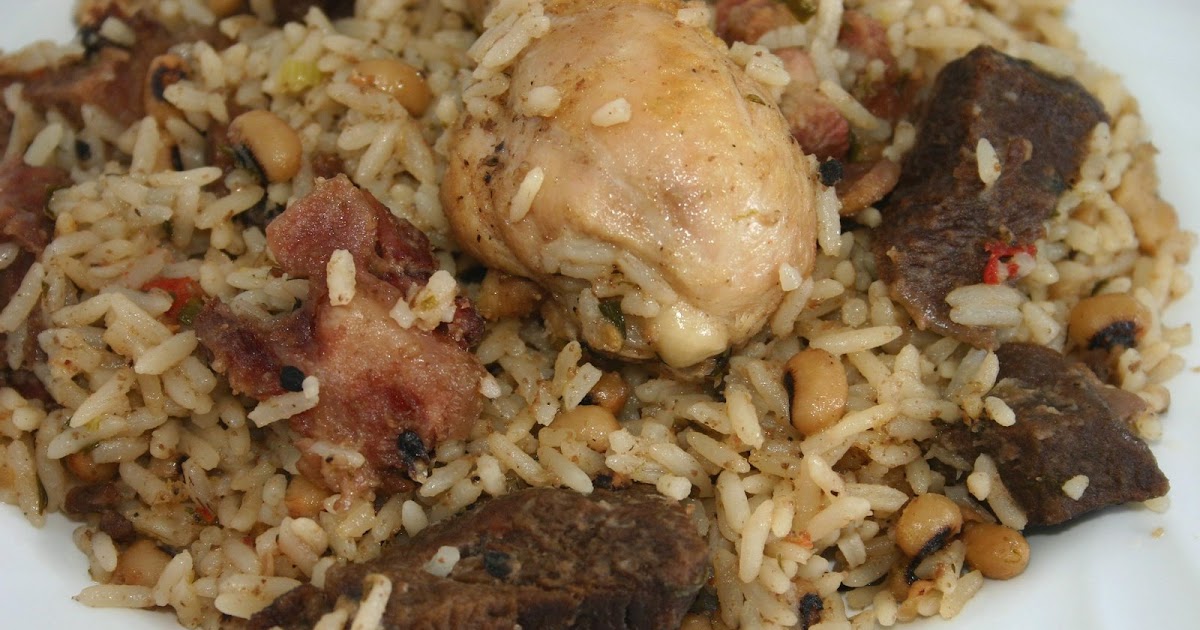
Pepperpot
This is a strange dish and you will need to have your adventurous taste buds on to go here. Best I can figure, this dish is some kind of East Indians attempt to turn a native Amerindian dish into some type of Cajun curry gumbo. Like Cook Up, there are many recipes the vary greatly, but the basic foundation of Pepperpot starts with Cassareep as a base. Cassareep is the juice that is extracted from the Cassava root during the process of making Cassava Flour, which is called Farinha in Brazil and Gari in Africa. In its raw state, it is poisonous and will kill you dead. It requires special boiling to neutralize the toxins in it. Not to worry though, this soup base has been primary spice in Amazonian tribal cuisine for thousands of years and is perfectly safe if properly cooked. It is quite delicious when used as a soup base. I have eaten hundreds of gallons of it in my life and find any soup not made with it to be lacking. But the Guyanese take cassareep to a whole new level in Pepperot. Whereas Amerindian cassareep is a light semi-clear liquid, Pepperpot cassareep is a deep black thick base. This is because they render it down with several other spices, like cinnamon; kind of like making a rouge for Cajun gumbo. Pepperpot can be made with any meat, but beef is the most common meat used. Although you can get Pepper pot all year long, it is considered a seasonal dish that is most commonly served during Christmas time.
Baigan Choka
This is a dish made from roasted eggplant. It tastes a lot better then it looks. It is made by poking garlic cloves into a whole eggplant and then roasting it over a fire. The insides are then scraped out and mixed with other spices. It is certainly something you should try it out if you can find it. It usually served with a side of Roti
Roti
Roti is a type of East Indian flatbread that is a common part of Guyanese dishes. It is served along with most curry dishes and thier famous Split Pea Soup.
Split Pea Soup
It may be hard to believe but Split Pea Soup is a large part of the Guyanese culture. So much so, that the importation of peas was banned as contraband right along with wheat back in the 1980s. The government’s intention was to force the culture of Guyana to change from a European style diet and adopt a diet that consists of only locally grown food items such as Cassava and Rice. This effort obviously failed and split pea soup remains a very popular dish in Guyanese cuisine. Like everything else in Guyana, split pea soup is prepared with different family recipes. So, just because you have tasted it at one place does not mean you have experienced it.
For more information on Guyanese cuisine and to try some at home check out this great cookbook: What’s Cooking in Guyana
